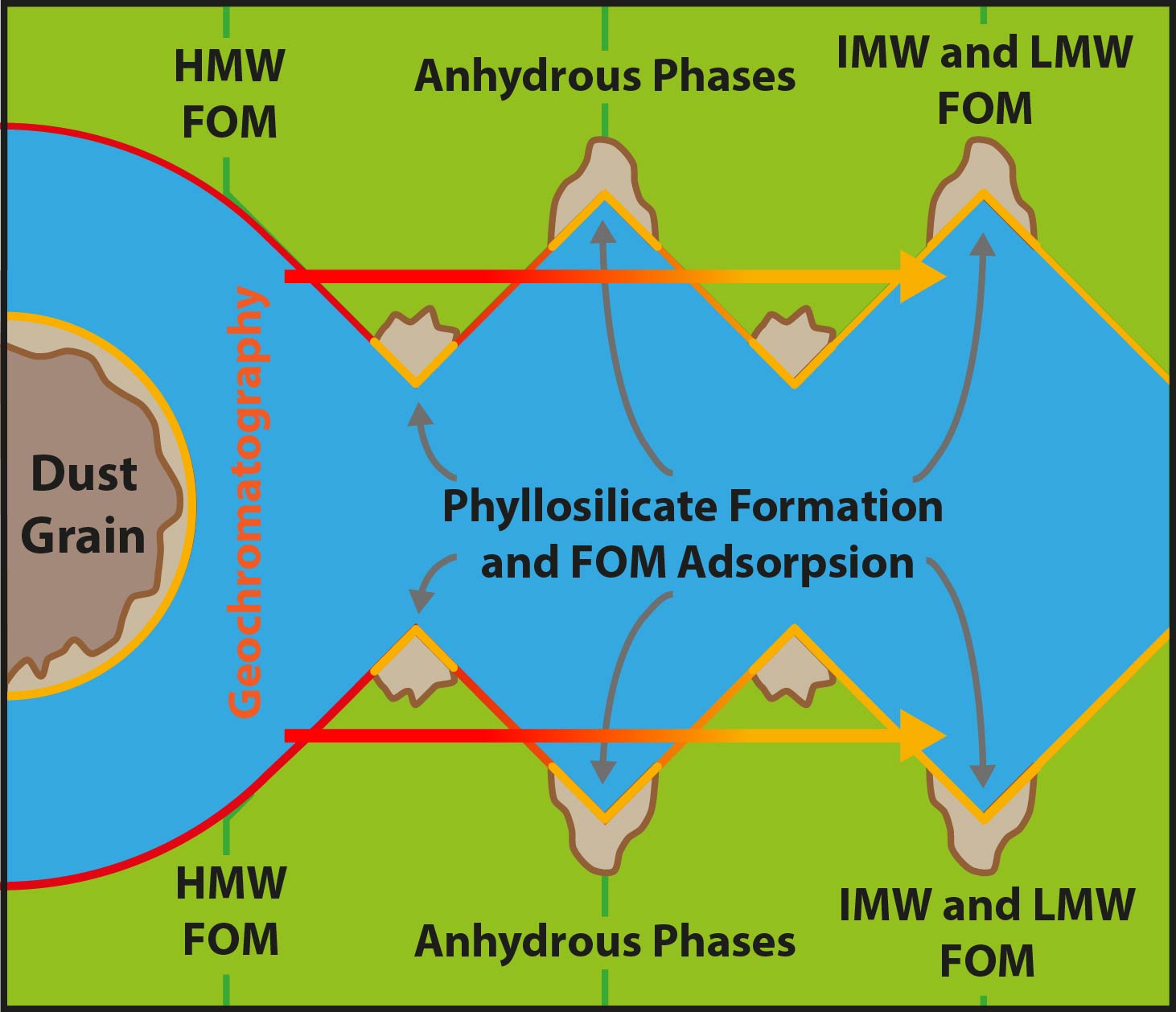Concentration of meteoritic free organic matter by fluid transport and adsorption
Carbonaceous chondrites, such as Murchison CM2, formed early in the solar system’s history. As such, these extraterrestrial materials record the processes that have operated since their formation. Carbonaceous chondrite parent bodies represent the non-differentiated aggregates of ice, dust and chondrules that were present in the protosolar nebular. Radioactive elements, such as 26Al and/or 60Fe, likely supplied the heat necessary to melt the accreted ice, which in turn reacted with the accreted minerals (mainly olivine and pyroxene and some metals and sulphides) to form secondary minerals, including phyllosilicates, sulphates and carbonates.
Carbonaceous chondrite parent bodies also contain a small amount of organic matter, which was likely produced in either the interstellar medium, protosolar nebular or on the parent body. Such organic matter includes biogenically important molecules, such as amino acids, nucleobases and sugars, which are essential to life on Earth. Carbonaceous chondrites and their organic matter cargo are periodically transported to the Earth. Therefore, constraining the origin of these molecules is important to understanding how life on Earth and elsewhere in our universe can come into being.
Aqueous alteration also effected organic matter through alteration and/or synthesis processes. Exactly what processes effected the organic matter within carbonaceous chondrites (CM, CI and CR) is still debated. Nevertheless, fluid circulation should have impacted the distribution of free organic matter (FOM) found within carbonaceous chondrites. Previous studies have shown associations between phyllosilicate phases and organic matter and employed aqueous alteration as a process that can move and concentrate organic matter onto these phases. However, no studies have demonstrated the effects of aqueous alteration on a specific set of organic molecules in relation to phyllosilicates.

Homologues are organic compounds that differ by their hydrocarbon chain length, but possess the same functionalities. In the Murchison meteorite alkyimidazoles appear to be fractionated in terms of their low molecular weight (LMW) and high molecular weight (HMW) homologues. The LMW homologues have a wider distribution and are associated with phyllosilicates, whereas HMW homologues are limited in their spatial distribution and do not show as stronger correlation with phyllosilicates. Such an observation indicates that LMW alkylimidazoles were preferentially mobilised by aqueous rich fluids over their HMW counterparts, presumably due to differences in solubility. The aqueous fluids then preceded to alter silicate minerals to phyllosilicates, which later adsorped the LMW homologues in solution. The adsorption of LMW organic matter onto phyllosilicates may protect these compounds from further alteration by aqueous fluids. Therefore, the adsorption and concentration of organic matter on phyllosilicates may allow the availability of biogenically important molecules on the Earth’s surface during the period when life originated.
References:
- Christian Potiszil, Ryoji Tanaka, Tsutomu Ota, Tak Kunihiro, Katsura Kobayashi, Eizo Nakamura. Concentration of meteoritic free organic matter by fluid transport and adsorption. Geochemical Perspectives Letters, 13, 30–35 (2020). doi:10.7185/geochemlet.2010, dream/20200318094021-774984.